When managing a project, one of the biggest concerns for any project manager or business owner is ensuring that the project stays within budget. Achieving this requires accurate project cost estimation–a process that helps determine the total funds necessary to complete a project successfully. But how can you ensure your cost estimates are accurate, especially with the many unpredictable elements that can arise? We will walk you through various project cost estimation methods, common pitfalls, and best practices to set you up for success.
What is project cost estimation?
Project cost estimation in financial management is the process of predicting the total financial resources required to complete a project within scope and on time.
This process includes calculating direct and indirect costs, anticipating potential risks, and setting aside reserves for unforeseen expenses. Whether you‘re planning a construction project, software development, or any other project, an accurate cost estimate can be the difference between a smoothly executed project and one that falls apart due to financial strain.
Why accurate project cost estimation is crucial?
Inaccurate cost estimates can cause a project to run out of funds, which may lead to delays, rework, or even project failure. By ensuring you have an accurate cost estimate, you can avoid budget overruns, ensure stakeholder satisfaction, and increase the likelihood of project success. Moreover, precise estimation builds trust with stakeholders and sets realistic expectations from the start.
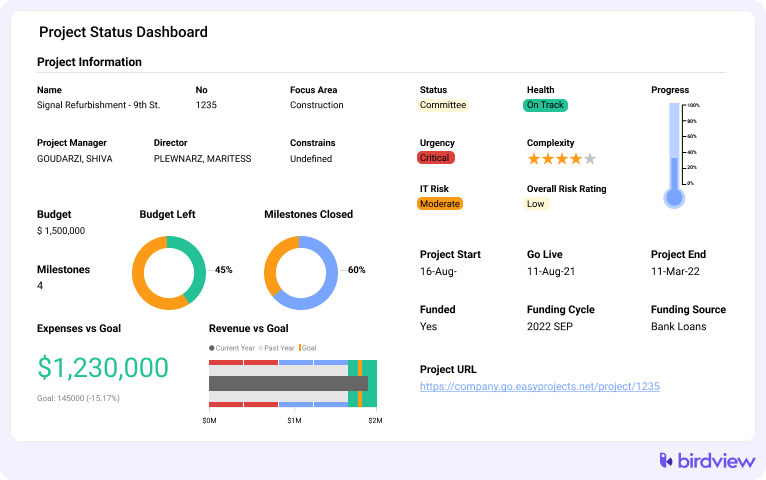
However, achieving accurate project cost estimation isn’t easy. It often requires an in-depth understanding of the project‘s scope, careful planning, and foresight into potential risks and challenges.
The challenges of project cost estimation
Cost estimation is far from straightforward. While many projects begin with an optimistic outlook, unforeseen challenges can quickly disrupt even the most well-planned budgets. Project cost estimation requires not only a deep understanding of the project scope but also an ability to predict external variables and adapt to them.
Several challenges can get in the way, including:
- Unclear project scope: If the project scope is not clearly defined, it‘s hard to estimate the cost accurately.
- Dynamic requirements: Project requirements can evolve, and if these changes aren‘t reflected in the budget, costs can spiral out of control.
- External factors: Inflation, supply chain disruptions, and other market conditions can unexpectedly increase costs.
- Risk management: Not anticipating risks such as technical challenges or delays can lead to underestimating project costs.
How to estimate project costs
Estimating project costs is a critical step in the planning process, ensuring that your project is financially feasible and that resources are allocated efficiently. An accurate cost estimate provides a foundation for project success, helping to secure funding, manage stakeholder expectations, and avoid budget overruns.
1. Define the project scope
Before diving into numbers, it‘s essential to have a clear understanding of the project scope. The project scope defines the specific deliverables, tasks, and objectives that need to be accomplished. This clarity helps in identifying all the necessary activities that will contribute to the project and form the basis for your cost estimate.
Tip: Use a work breakdown structure (WBS) to break down the project into smaller, manageable tasks. This ensures that no essential components are overlooked during cost estimation.
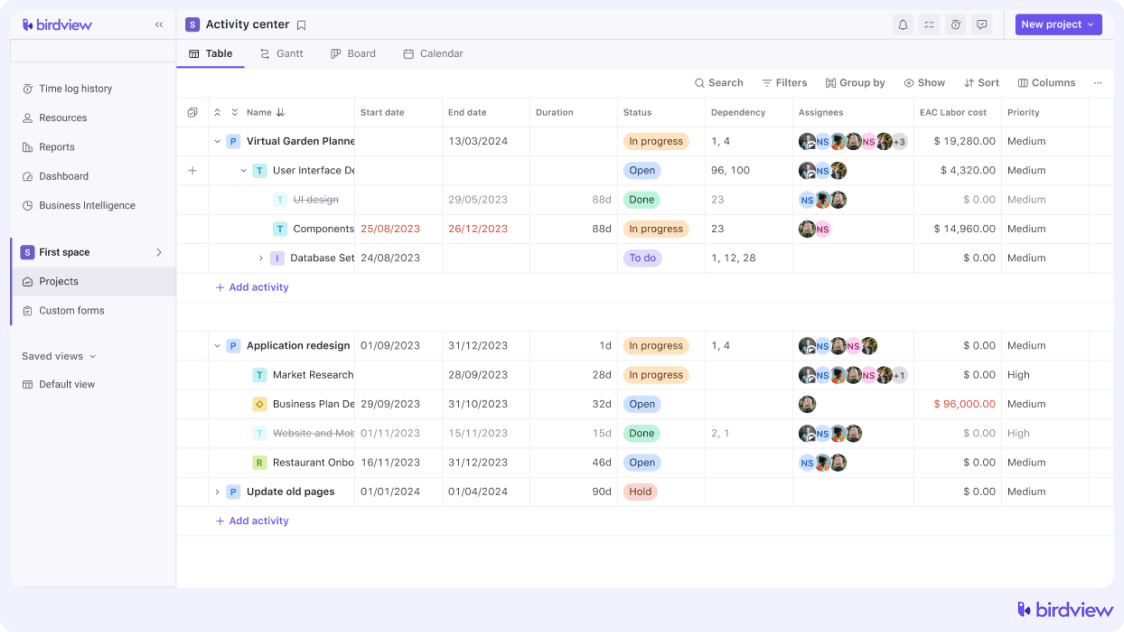
Further Reading
2. Identify required resources
Once the scope is defined, the next step is to identify the resources needed to complete the project. These resources typically include labor (team members, contractors), materials, equipment, and services (e.g., software tools, and consulting services). Birdview‘s resource allocation functionality can help you manage this process efficiently by assigning resources based on availability and cost-effectiveness. With real-time tracking of resources, you can optimize labor and materials to avoid unnecessary expenses, ensuring that you have the right resources at the right time.
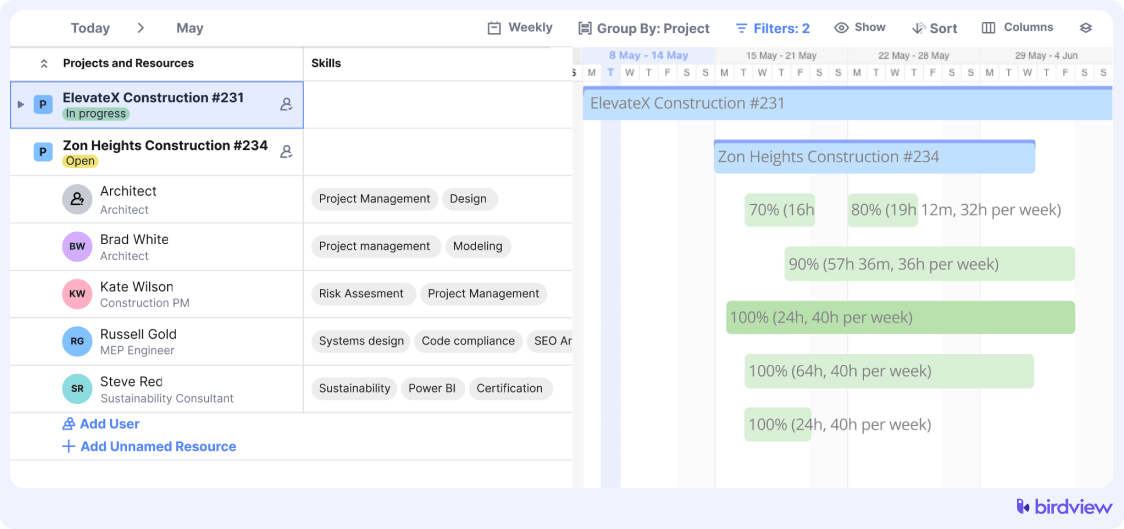
3. Calculate direct, indirect, and contingency costs
Direct costs are expenses that are tied directly to specific project activities, such as labor, materials, and equipment. Calculate these costs based on rates, quantities, and timeframes required to complete each task.
Indirect costs, also known as overhead costs, are not directly tied to any one activity but are essential for completing the project. These include office rent, utilities, administrative expenses, and software subscriptions.
In addition, contingency costs should be included to account for uncertainties and risks that could impact the project, such as delays, price fluctuations, or unforeseen technical issues. Contingency costs are typically calculated as a percentage of the total project cost, depending on the level of risk involved.
Tip: For high-risk projects, consider setting aside 10-20% of the total budget as a contingency to cover unforeseen expenses.
4. Use historical data
One of the most effective ways to estimate costs is by using historical data from similar past projects. Birdview‘s built-in business intelligence (BI) reports and customizable dashboards allow you to access valuable historical data, helping you create more accurate cost estimates. These tools provide insights into labor, material, and equipment costs, as well as highlight potential risks or challenges that could arise during the project.

5. Choose the right estimation method
There are various methods to estimate project costs, and choosing the right one depends on the project size, complexity, and available data. We‘ll review the most popular project cost estimation methods below.
6. Account for risks
Risk management is a key part of cost estimation. Identify potential risks that could affect the budget, such as resource availability, supply chain disruptions, or regulatory changes. Estimate the potential financial impact of these risks and include them in your budget as a risk reserve.
7. Review and validate your estimate
Once the estimate is complete, review it thoroughly with key stakeholders to ensure nothing has been overlooked. Validate the estimate by comparing it to benchmarks or seeking expert opinions. This step helps to identify any gaps or discrepancies and ensures that the estimate is realistic and achievable.
8. Monitor and update cost estimates throughout the project
Cost estimation is not a static process. As the project progresses, there will be changes in scope, unforeseen issues, or market conditions that can affect the budget. Continuously monitoring and updating your cost estimates ensures that the project stays financially viable.
Methods of project cost estimation
There are various methods used to estimate project costs, each with its strengths, weaknesses, and suitable contexts. The method you choose depends on the type of project, the availability of data, and the level of detail required. These methods are typically divided into three categories: top-down, bottom-up, and hybrid.
Top-Down Methods
Top-down methods start with a high-level view of the project and use general assumptions to estimate the total project cost. These methods are often quicker and less detailed but can be useful when limited information is available early in the project.
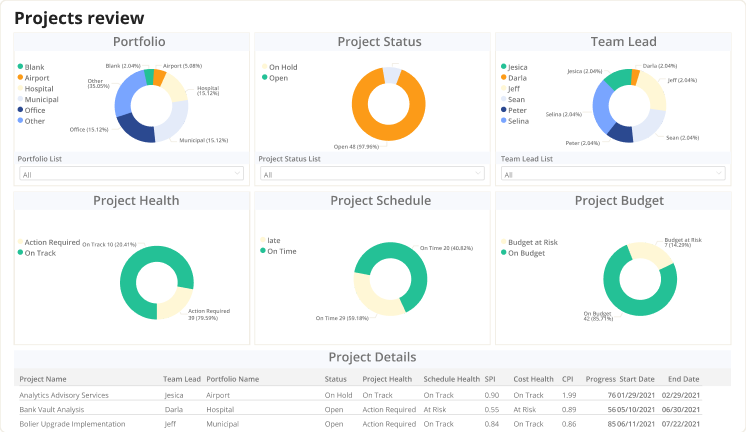
Analogous Estimation
This method leverages the cost data from similar, completed projects to estimate the cost of the current one. It‘s particularly useful when you have historical data for projects of a similar scope. For example, if your company has built a similar 50-unit apartment building in the past, you can use the costs from that project as a baseline for estimating the cost of a new apartment building with slight adjustments based on changes in materials or location.
Example: In software development, if a previous project for developing a mobile app took 1,000 hours and cost $50,000, and the current project is slightly larger but similar in functionality, you might estimate the new project will take 1,200 hours and cost around $60,000.
Parametric Estimation
Parametric estimation uses statistical models to estimate costs based on project parameters. This method is more data-driven and involves using unit rates (such as cost per square foot, per hour, or per task) to calculate total costs. For example, if a project manager knows the average cost of building a square foot of a residential house is $200, and the house to be built is 2,500 square feet, the total estimated cost would be $500,000.
Example: In construction, if the cost per square meter to lay the foundation is $100, and the building’s foundation covers 500 square meters, the estimated cost for the foundation would be $50,000. Similarly, in a marketing campaign, you could estimate that each digital ad costs $1.50 per click, and you expect 10,000 clicks, leading to an estimated ad cost of $15,000.
Expert Judgment
Expert judgment relies on the experience and knowledge of seasoned professionals to estimate project costs. This approach is particularly useful for complex or unique projects where data is scarce and industry experience is crucial. Experts assess the scope, potential risks, and resource requirements to provide a cost estimate.
Example: In an aerospace project, where every design is highly specialized, an expert with decades of experience in aircraft design may be consulted to estimate the cost of new, custom-built components or systems. They might base their estimate on similar past designs while accounting for the unique challenges of the current project.
Bottom-Up Methods
Bottom-up estimation is a more detailed approach, where the project is broken down into smaller tasks, and each task is estimated individually. These estimates are then aggregated to create the overall project cost. This method is highly accurate but time-consuming and resource-intensive.
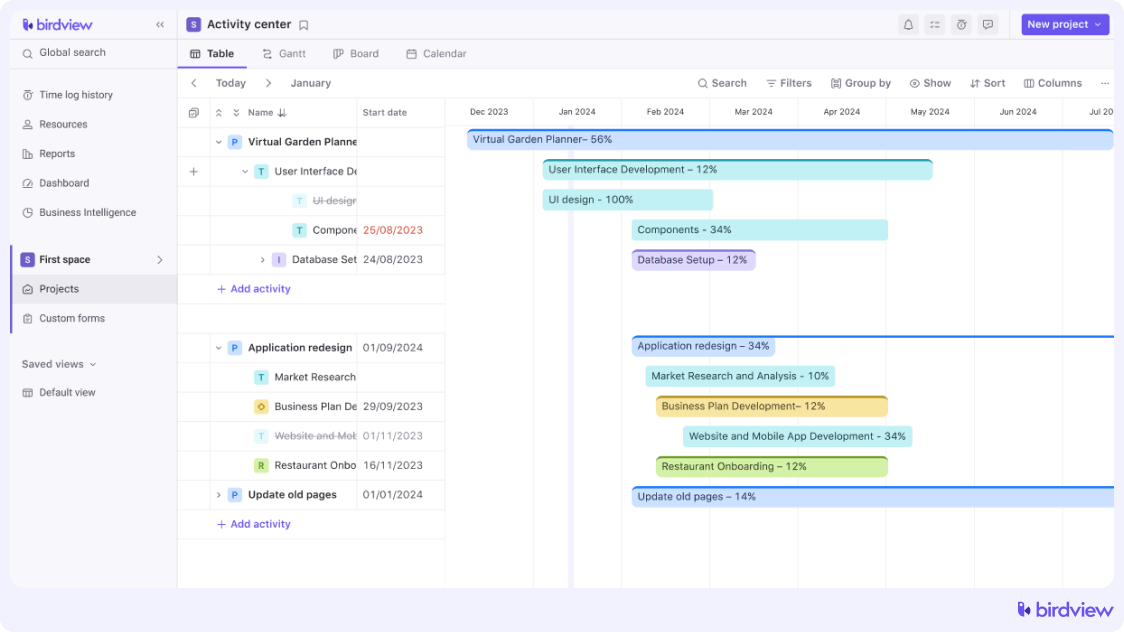
Detailed Cost Estimation
This method requires a granular breakdown of every task and activity required to complete the project. Costs are estimated for each individual task, and then those costs are summed to provide the total project cost. This approach is ideal for projects where all the details and requirements are clearly defined upfront.
Example: In a construction project, detailed cost estimation would involve estimating the cost of each element, such as excavation, foundation, framing, roofing, electrical, plumbing, and finishing work. Each of these activities would have associated costs for labor, materials, equipment, and time. If excavation costs $30,000, foundation work costs $50,000, and so on, the total project cost would be the sum of these individual estimates.
Contingency Planning
Contingency planning involves allocating additional funds to cover potential risks and uncertainties that may arise during the project. This method is not about predicting every potential issue but rather ensuring that you have financial resources available to handle unforeseen problems. It‘s often included as a percentage of the overall project budget.
Example: If you’re managing an IT infrastructure project, you might allocate a contingency of 10% of the total project cost to cover unexpected server upgrades or delays in equipment delivery. So, if the project is estimated to cost $500,000, you would set aside an additional $50,000 as a contingency reserve.
Reserve Analysis
Similar to contingency planning, reserve analysis involves setting aside funds, but these reserves are often for broader, more general risks or uncertainties rather than specific risks. Reserve costs act as a safety net for entirely unknown factors.
Example: In large-scale government projects, a portion of the budget is often set aside as a reserve to handle unexpected regulatory changes or environmental assessments that weren‘t foreseen during the initial project planning phase. If the project is worth $10 million, you might allocate 5%, or $500,000, as a reserve to handle these potential unknowns.
Hybrid Methods
Hybrid methods combine aspects of both top-down and bottom-up estimation, providing a balanced approach that offers both speed and accuracy.
Three-Point Estimation
Three-point estimation involves calculating three possible outcomes: a best-case scenario, a worst-case scenario, and the most likely scenario. These are then averaged to provide a more realistic cost estimate that accounts for uncertainty.
Example: If you’re estimating the cost of developing a new software feature, you might estimate that in the best case, it will take 200 hours, in the worst case, 400 hours, and the most likely case, 300 hours. Using the three-point method, the estimated hours would be calculated as (200 + 400 + 300) / 3 = 300 hours. This averaged estimate would then be multiplied by the developer‘s hourly rate to get the total cost.
Monte Carlo Simulation
Monte Carlo simulation is a sophisticated technique that uses probability distributions and random variables to model and estimate potential project costs. It provides a range of potential outcomes and their probabilities, which is particularly helpful for large, complex projects with many uncertainties.
Example: In a large-scale construction project, the Monte Carlo simulation might simulate hundreds of scenarios, adjusting variables like material costs, labor availability, and weather conditions. The result would be a probability distribution showing that there‘s a 70% chance the project will cost between $5 million and $5.5 million, giving project managers a range of potential outcomes to prepare for.
Further Reading
Key components of a project cost estimate
An accurate cost estimate is much more than just adding up numbers–it involves breaking down the various aspects of a project into manageable and understandable components. Understanding these components helps in creating a clear and comprehensive cost estimate that accounts for all necessary expenses, minimizes surprises, and provides a clear path for project success.
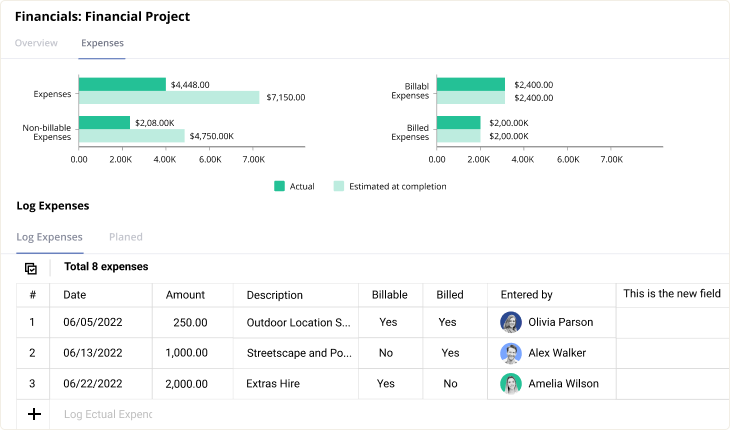
1. Direct Costs
Direct costs are those expenses that are directly tied to specific project activities. These are typically the most obvious and easy to calculate since they relate to the physical or labor-intensive aspects of the project. Direct costs include items such as materials, labor, equipment, and subcontractor fees, and they vary depending on the nature of the project.
Example: In a construction project, direct costs would include the price of bricks, cement, steel, labor wages for workers, and renting heavy machinery like cranes or bulldozers.
Because these costs are tied to specific activities, any changes to the project scope can have a direct impact on these expenses. For instance, adding additional features to a software development project would increase the amount of development hours required, which in turn increases direct labor costs.
2. Indirect Costs
Indirect costs, sometimes referred to as overhead, are expenses that cannot be traced back to specific project tasks but are essential for the overall completion of the project. These costs are usually shared across multiple projects or activities within an organization and often include administrative expenses, office supplies, utilities, insurance, and management fees.
Example: For a marketing campaign, indirect costs might include the cost of running a project management tool, office supplies, or the salaries of support staff who aren‘t directly involved in campaign execution.
Even though indirect costs don‘t directly contribute to specific project tasks, they‘re critical for overall project success. Neglecting to account for these costs can lead to budget shortfalls, especially in large, complex projects where management and administrative support are critical.
3. Contingency Costs
Contingency costs are funds that are set aside to cover potential risks and uncertainties identified during the project planning process. These costs are allocated for known risks–those that are anticipated but not yet fully defined. Contingencies help manage costs related to project changes, technical difficulties, or other issues that were expected but are not guaranteed to occur.
Example: In a software development project, a contingency might be reserved for potential delays due to unexpected technical challenges, like compatibility issues with third-party systems.
Contingency costs are typically calculated as a percentage of the total project cost and are used to ensure that the project stays within budget even when faced with moderate challenges. However, these funds should only be used for risks that have been planned for, not completely unforeseen events.
4. Reserve Costs
Reserve costs, also known as management reserves, are funds allocated for unknown or unforeseeable risks–things that were not anticipated during the planning phase but could arise during project execution. Unlike contingency costs, which are set aside for specific risks, reserve costs are a safety net for true emergencies or entirely unexpected situations.
Example: Reserve costs might be used in a construction project if there is an unexpected regulatory change requiring additional compliance measures, which were not foreseen when the project was planned.
These reserves ensure that the project is financially prepared to handle unanticipated events without drastically derailing the project‘s progress. Reserve costs are typically controlled by upper management and require approval before being used, as they are intended for critical, unplanned issues.
Project cost estimation tools and techniques
Accurate project cost estimation requires the right tools and techniques to collect, analyze, and manage data efficiently. With the increasing complexity of projects across industries, specialized tools can help project managers make well-informed decisions, track costs in real time, and stay ahead of any budget-related issues. Below are some of the most common and effective project cost estimation tools and techniques.
1. Spreadsheets
Spreadsheets are a simple, flexible, and commonly used tool for cost estimation. Programs like Microsoft Excel or Google Sheets allow project managers to manually enter costs, apply formulas, and track expenses over time. Spreadsheets are especially useful for small- to mid-sized projects that are less complex.
However, spreadsheets have their limitations. They require manual updates, can become unwieldy for larger projects, and lack automation, which can lead to errors if data entry is not done carefully.
2. Project Management Software
For larger or more complex projects, spreadsheets often aren‘t sufficient to manage the intricacies of project costs, timelines, and risks. This is where project management software, such as Birdview, comes into play. These tools offer advanced features such as cost tracking, budgeting, scheduling, task management, and resource allocation, all in one platform. They are ideal for managing both project finances and the entire project lifecycle.
Bidview is a powerful project management software tool that allows project managers to create accurate cost estimates during the bidding process by comparing historical project data, costs, and labor rates. Bidview also helps organizations track actual costs against the original estimate throughout the project, providing a clear picture of financial performance.
Birdview streamlines project cost estimation by offering real-time tracking, resource management, reporting, and integration capabilities. Below are some key features that help project managers ensure financial control and accuracy throughout the project lifecycle.
- Automated cost tracking
Automated cost tracking enables project managers to monitor expenses in real time. As tasks are completed or new costs arise, the software automatically updates the project budget. This feature ensures continuous oversight of financial performance, reducing the likelihood of unnoticed budget overruns and allowing for quick corrective actions when needed.
- Resource allocation
Resource allocation tools ensure that labor, materials, and equipment are optimally assigned across the project. By preventing both overuse and underutilization of resources, this feature helps manage project costs more efficiently and ensures that tasks are completed without incurring unnecessary expenses.
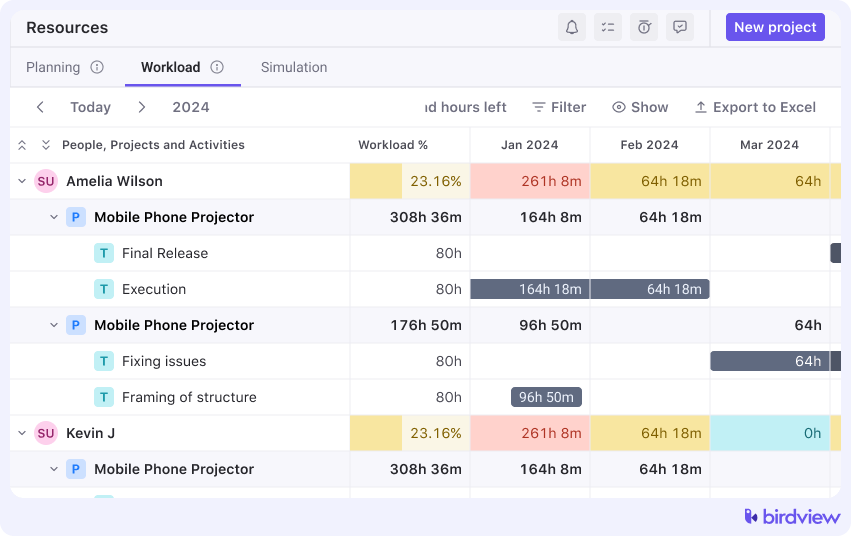
- Reporting and forecasting
The reporting and forecasting features provide detailed insights into current costs and anticipated future expenses. These reports help project managers track financial progress, compare actual costs against estimates, and anticipate potential risks to the budget, ensuring informed decision-making.
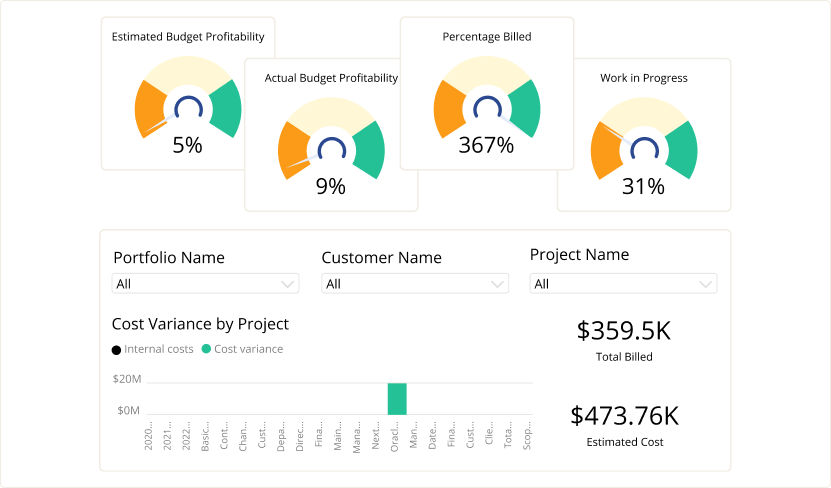
- Integration with other systems
Project management software often integrates with accounting platforms and other business tools, allowing for seamless data flow. This integration ensures that financial data from across the project is accurately captured and synced with broader company systems, reducing manual input and minimizing errors.
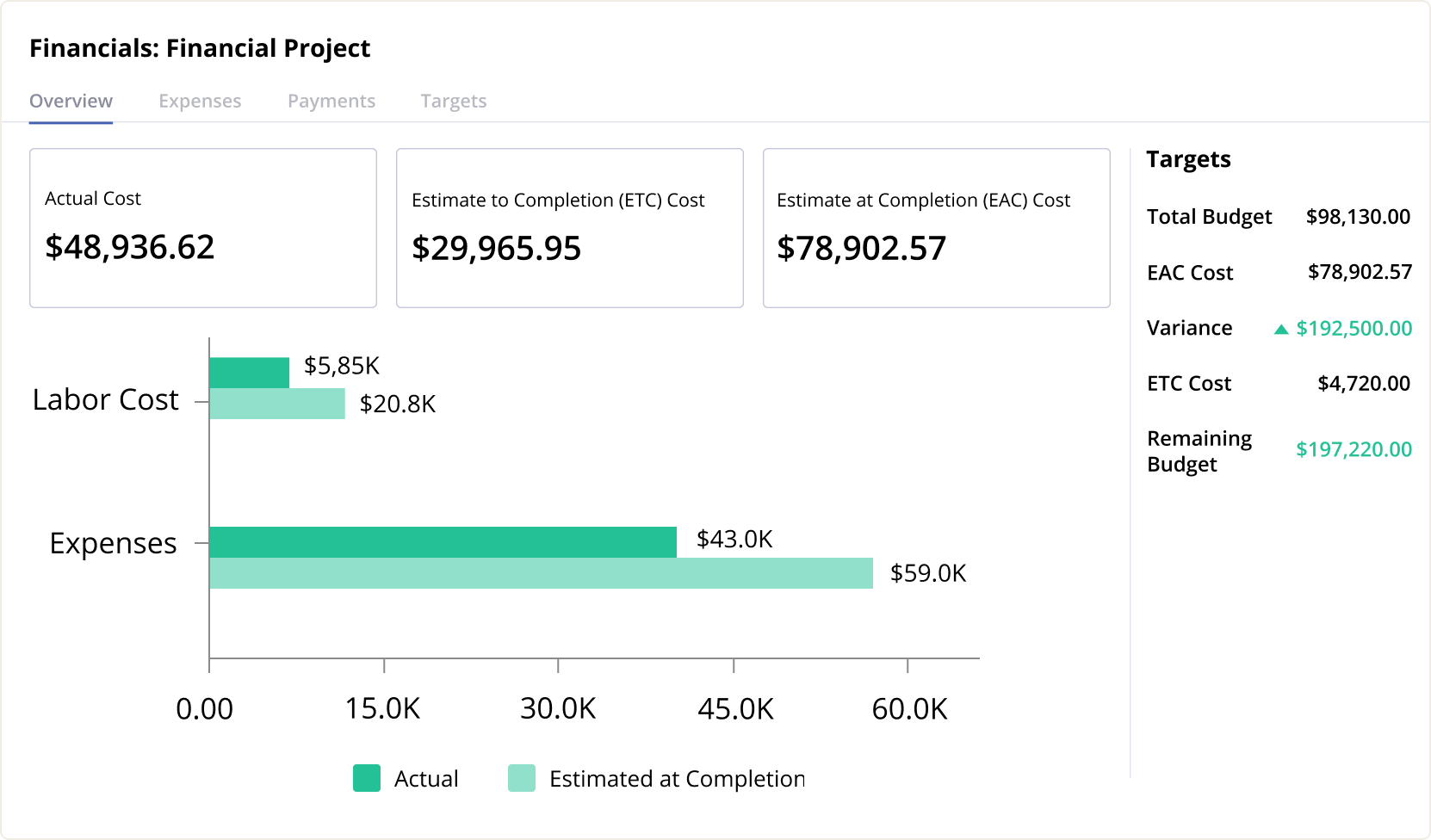
3. Earned Value Management (EVM)
Earned Value Management (EVM) is a technique used to track project performance by comparing the amount of work completed with the amount of money spent. EVM provides insight into both the project‘s cost efficiency and schedule performance, helping managers make adjustments in real-time to keep the project on track.
4. Cost-Benefit Analysis
Cost-benefit analysis (CBA) is a financial tool used to determine the best course of action by comparing the costs of a project or investment against the benefits it will deliver. It helps in deciding whether the expected return on investment (ROI) is worth the expense.
Further Reading
Examples of project cost estimation scenarios
Project cost estimation varies significantly depending on the type of project, its scope, and the industry it operates in. Whether you’re managing an engineering project, developing a software product, or executing a marketing campaign, each scenario presents its own unique set of financial challenges and requirements. Here are a few examples of project cost estimation scenarios for construction, software development, and marketing projects.
1. Engineering project cost estimation example
Scenario: Designing and constructing a bridge for a city‘s new infrastructure plan
For an engineering project such as designing and constructing a bridge, cost estimation would need to account for both the design phase and the physical construction, as well as indirect costs and risks associated with such large-scale infrastructure projects.
- Direct costs: Direct costs include labor expenses for engineers, architects, project managers, and construction workers, as well as the cost of materials such as steel, concrete, asphalt, and reinforcement bars. Additionally, the rental or purchase of equipment and machinery, including cranes, excavators, and scaffolding, is factored into this category.
- Indirect costs: Design and administrative costs, including office overhead and legal fees, as well as permits, licensing, and regulatory fees required for project approval and inspections.
- Contingency: A contingency budget (typically 10-20%) set aside for unforeseen risks such as delays or fluctuating material prices.
- Reserve costs: Additional funds allocated for unexpected risks, such as geological issues, supply chain disruptions, or weather delays.
2. Software development project cost estimation example
Scenario: Developing a mobile e-commerce app
In a software development project like building an e-commerce app, costs would include development time, testing, and deployment.
- Direct costs: Developer salaries (front-end, back-end developers), software licenses, testing tools, and deployment infrastructure (cloud services, server costs).
- Indirect costs: Overhead expenses like project management software, office space, and utilities.
- Contingency: A contingency budget could be included for unforeseen technical challenges, such as compatibility issues with different operating systems or last-minute changes in user requirements.
- Reserve costs: Reserve funds might be allocated for unexpected requirements like new features requested by stakeholders late in the project or third-party integration costs that were not initially anticipated.
3. Marketing campaign project cost estimation example
Scenario: Launching a nationwide digital marketing campaign
For a nationwide digital marketing campaign, cost estimation would cover areas like advertising spend, creative development, and analytics.
- Direct costs: Digital ad buys (Google, Facebook, Instagram ads), content creation (graphic design, video production), influencer fees, and copywriting services.
- Indirect costs: General marketing team salaries, project management software, office utilities.
- Contingency: Contingency funds could be set aside for potential increases in ad spend if initial impressions or click-through rates are lower than expected or if additional content creation is needed mid-campaign.
- Reserve costs: Reserve funds might be allocated for unexpected events, like having to reallocate ad spend due to shifts in audience behavior or delays in platform approvals.
Best practices and tips for project cost estimating
Accurately estimating project costs is a critical part of successful project management. Without reliable cost estimates, projects can easily run into budget overruns, delays, or worse–complete failure. However, cost estimation is not a one-size-fits-all process. It requires careful planning, the right tools, and continuous monitoring throughout the project‘s life cycle.
1. Involve stakeholders early
Engaging stakeholders from the beginning of the project ensures that all aspects of the project are considered in the cost estimation process. This collaboration helps to define the project scope more accurately and ensures that stakeholder expectations are aligned with the budget. When stakeholders are involved early, they can provide valuable input on requirements, potential risks, and resource availability, which can significantly improve the accuracy of the cost estimate.
Tip: Share access to the project through the guest portal and schedule regular meetings with stakeholders to discuss budget requirements, potential changes, and financial expectations. Their insights help avoid scope creep and unexpected costs later in the project.
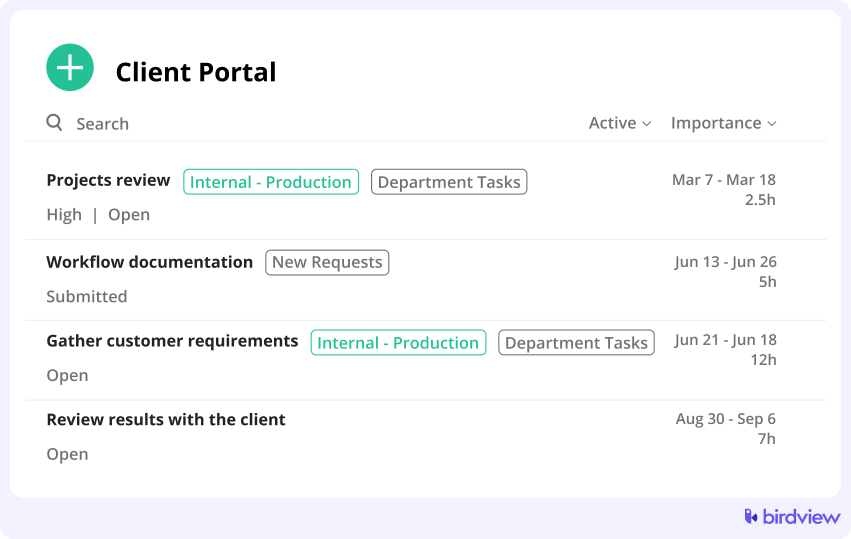
2. Use historical data
Leveraging historical data from similar past projects is a powerful tool for creating more accurate cost estimates. Past project data can provide insights into labor, material, and equipment costs, as well as highlight potential risks or challenges that may arise. Historical data helps to set realistic expectations and can be particularly useful for analogous or parametric estimation methods.
Tip: Maintain detailed records of previous projects, including final costs, timelines, and issues faced. This data can be a valuable resource for future project cost estimation, allowing for more informed decision-making and better budgeting accuracy.
3. Conduct regular reviews and updates
Cost estimation should not be a one-time task but rather an ongoing process throughout the project. Regularly reviewing and updating the budget as the project progresses ensures that any changes in scope, requirements, or market conditions are accounted for. This proactive approach helps to avoid last-minute budget shortfalls and ensures that cost forecasts stay aligned with actual project progress.
Tip: Schedule periodic budget reviews, especially after major milestones or phases of the project are completed. This allows for the detection of cost variances early and provides an opportunity to adjust estimates as needed.
4. Consider uncertainty and risk
Every project comes with inherent uncertainties, and failing to account for them in the cost estimate can lead to significant budget overruns. By factoring in risks and uncertainties from the start, project managers can build contingency plans and set aside reserves to handle unforeseen circumstances. This includes identifying known risks, estimating their potential financial impact, and allocating contingency costs to cover them.
Tip: Use risk assessment tools, such as risk registers or Monte Carlo simulations, to estimate the likelihood and impact of risks on the project. Set aside a reasonable contingency budget to address these risks without derailing the project‘s financial health.
5. Communicate effectively
Transparent and clear communication is key to keeping all stakeholders informed about the project‘s financial status. Regular updates on the project‘s cost estimates, any budget changes, and the reasons for those changes are critical to maintaining stakeholder confidence and preventing misunderstandings. Effective communication ensures that any necessary financial adjustments are approved promptly and that all parties have a clear understanding of the project‘s cost structure.
Tip: Create a communication plan that includes regular financial updates to stakeholders. Use easy-to-understand reporting formats that highlight key budget metrics, cost variances, and potential risks. This fosters trust and ensures everyone is on the same page regarding the project‘s financial status.